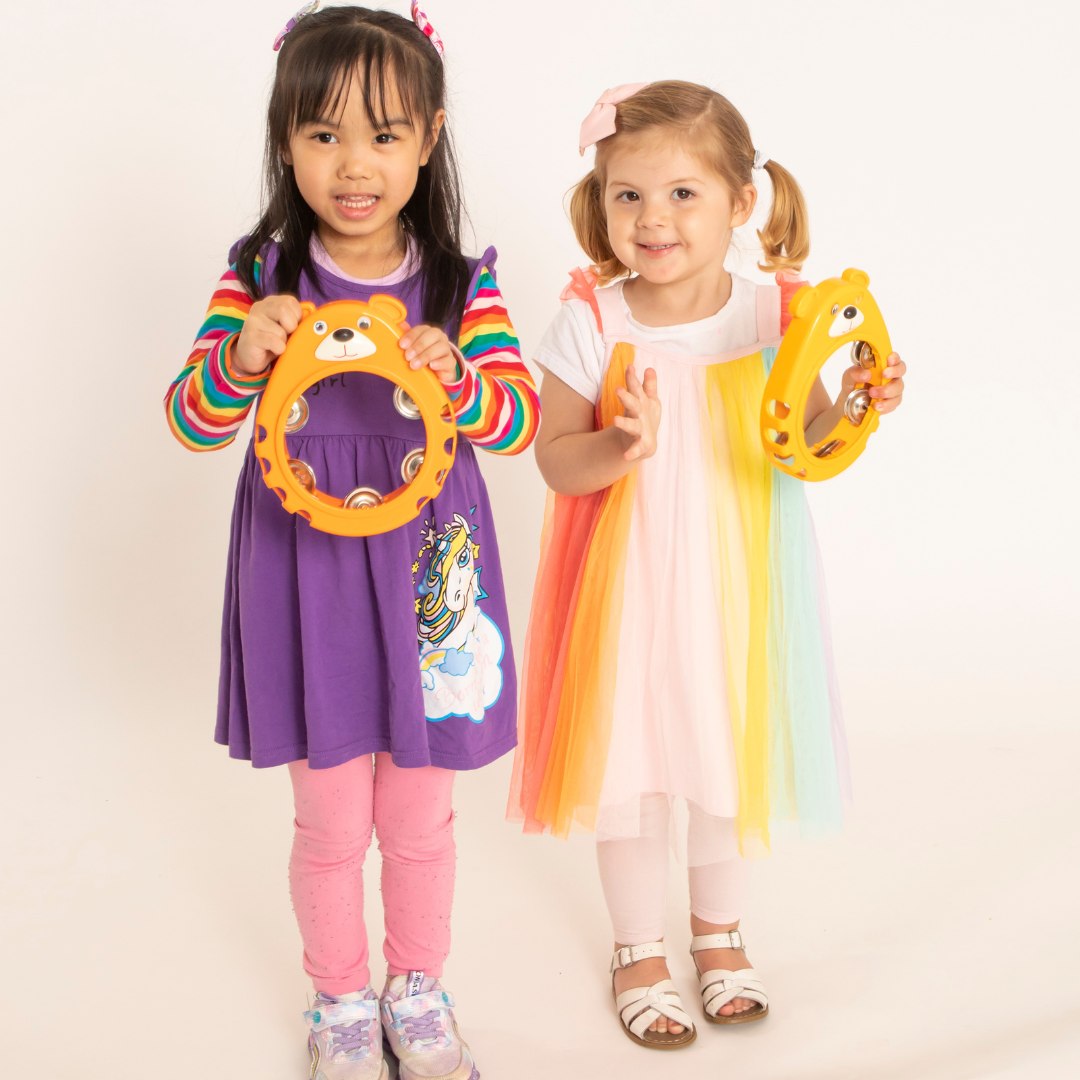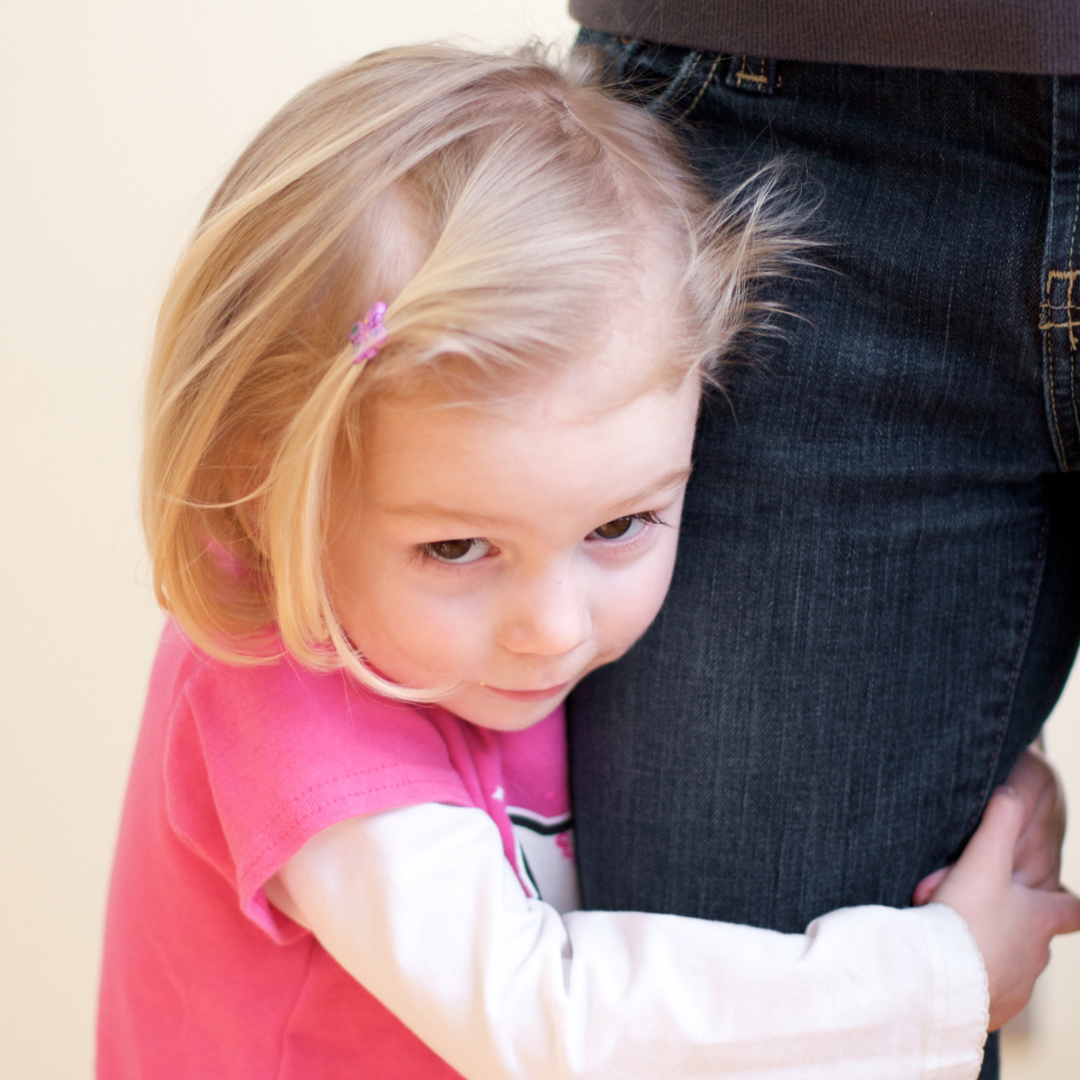Music as a Gateway to Creativity and Self-Expression in Early Childhood: Why Every Child Needs This Foundation
As parents and educators, we watch our little ones navigate the world with wonder and curiosity, often struggling to put their big emotions and creative ideas into words. For many children aged 5 months to 5 years, this developmental phase can be both exciting and challenging as they begin to form their sense of self and learn to communicate with the world around them.
Music offers something truly remarkable during this critical period: a universal language that allows children to express themselves freely while building the creative thinking skills they’ll need throughout their lives. Recent neuroscience research reveals that musical engagement during early childhood creates lasting changes in brain development, particularly in areas responsible for creativity, emotional regulation, and self-expression.
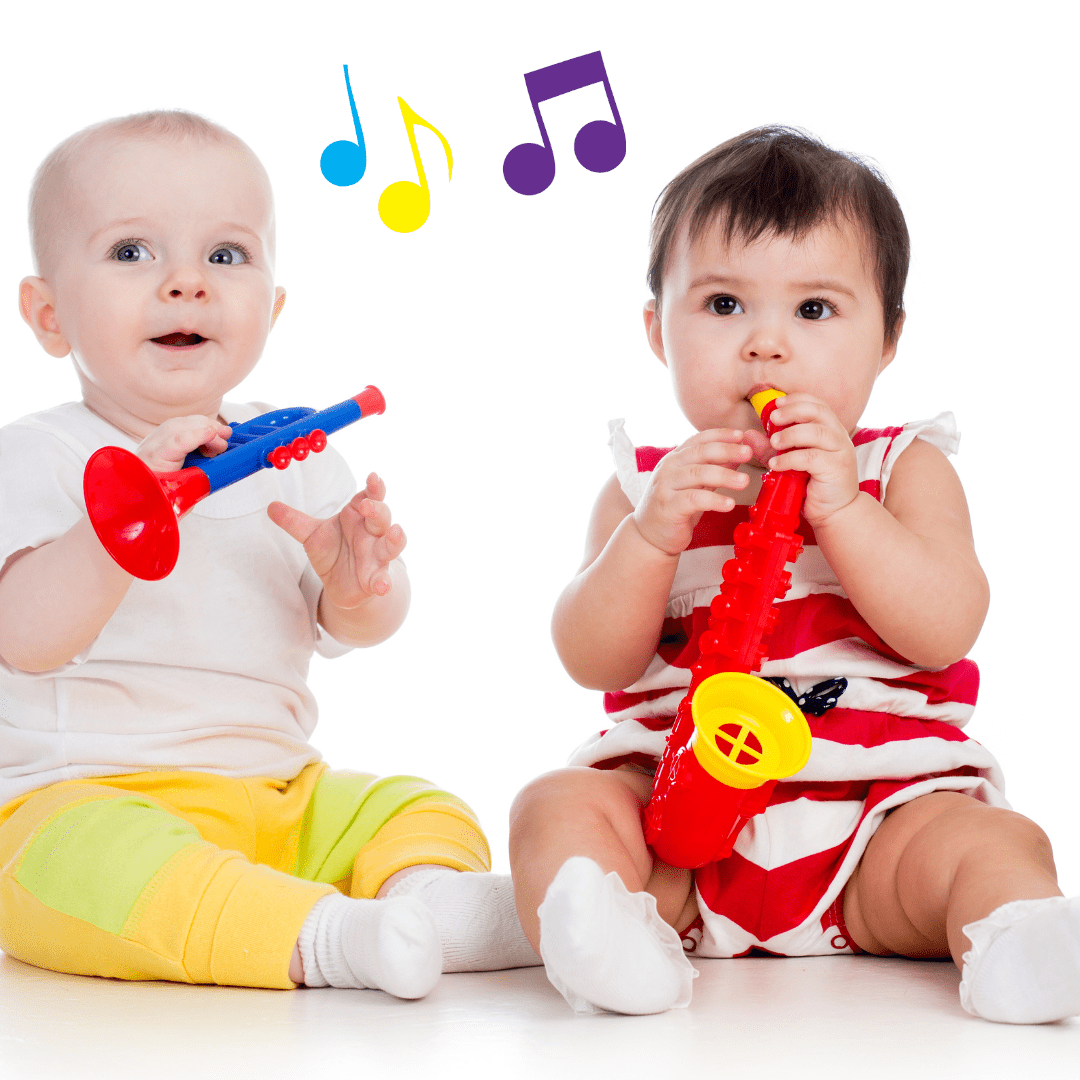
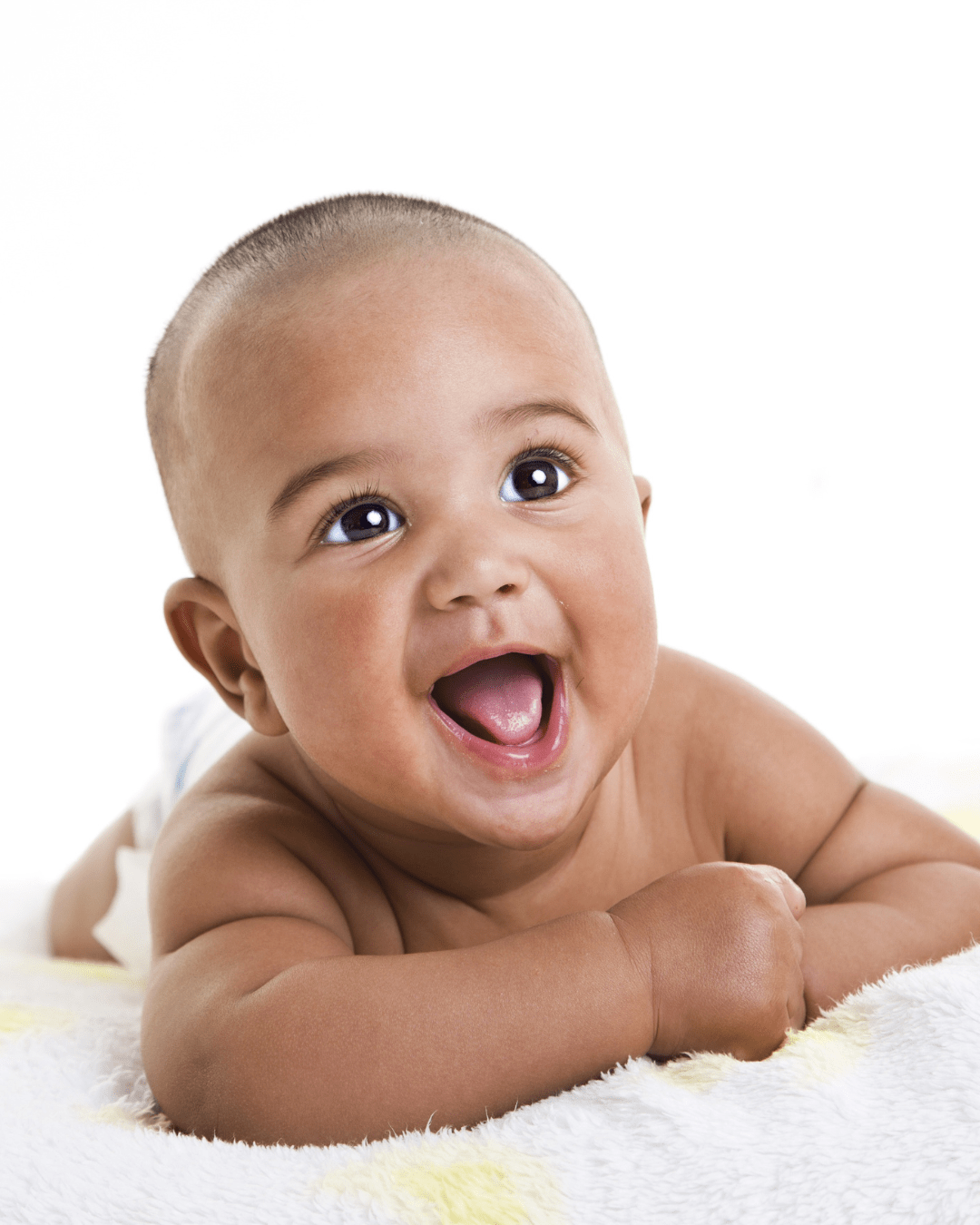
The Neuroscience Foundation: How Music Transforms Young Brains
The scientific evidence for music’s impact on early childhood development is both compelling and comprehensive. Research from the University of Southern California’s Brain and Creativity Institute shows that children who engage with music demonstrate significantly enhanced brain development compared to their non-musical peers. Dr. Assal Habibi’s groundbreaking five-year longitudinal study reveals that musical activities accelerate brain maturation in young children, particularly in areas responsible for processing sound, language development, speech perception and reading skills. The research found that children with music training were more accurate at processing sound and showed faster maturation of the auditory pathway, indicating increased neuroplasticity in response to musical instruction
When children engage with music—whether through singing, moving to rhythms, or playing simple instruments—they’re not just having fun. They’re literally rewiring their brains for enhanced creativity. A longitudinal study published in the Journal of Neuroscience found that children who participated in structured musical activities showed increased connectivity between brain hemispheres, leading to improved creative problem-solving skills that persisted into adolescence.
The implications for school readiness are particularly significant. Research from Northwestern University demonstrates that children with early musical training show enhanced executive function skills, including working memory, cognitive flexibility, and inhibitory control—all crucial components for academic success and creative thinking in classroom settings.
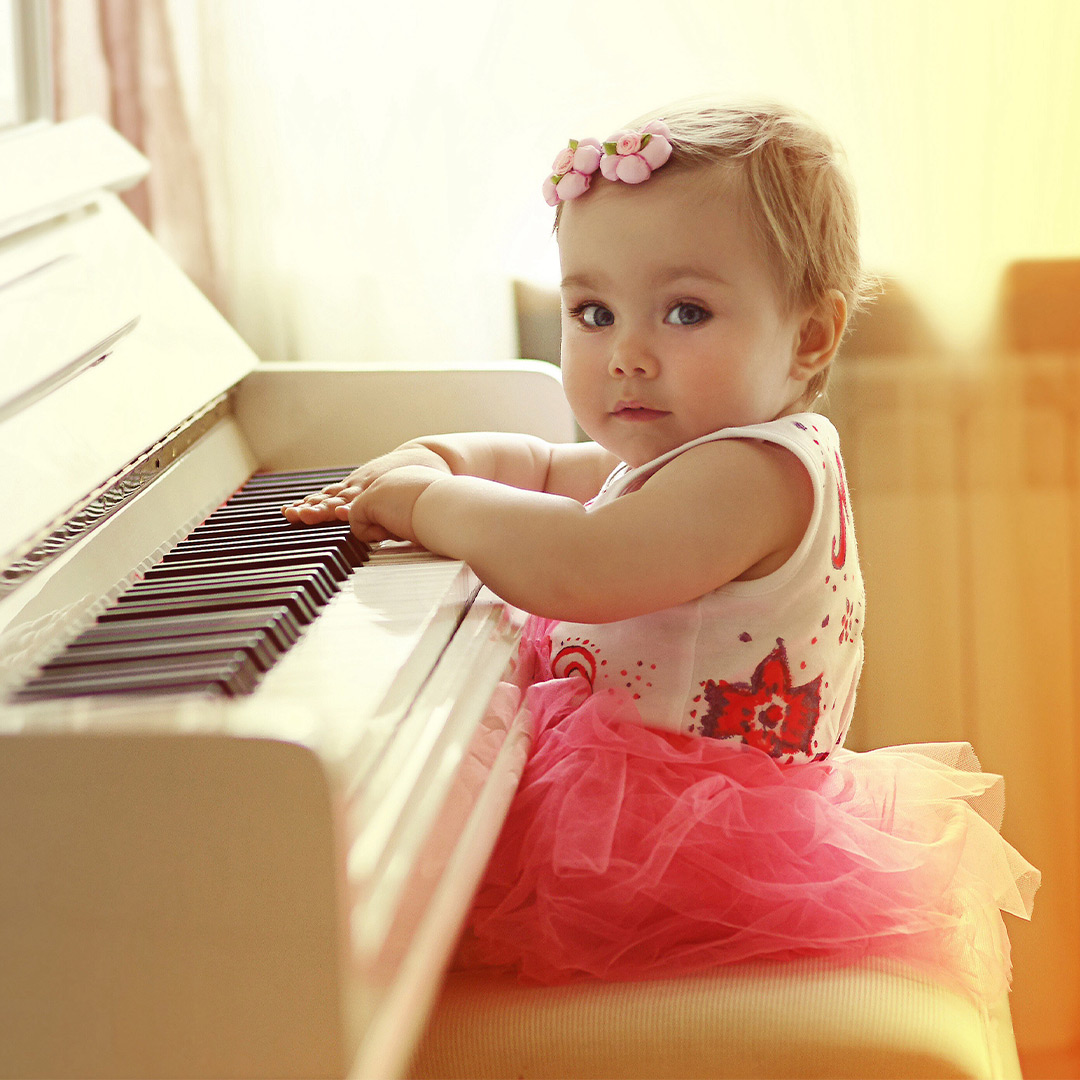

Music as an Emotional Safe Haven
Beyond cognitive benefits, music provides crucial emotional support during these formative years. For young children who often feel overwhelmed by emotions they can’t yet articulate, music provides a safe and natural outlet for expression. Dr. Laurel Trainor’s research at McMaster University reveals that musical activities trigger the release of oxytocin and endorphins, creating a neurochemical environment that promotes emotional well-being and reduces stress responses in young children.
This emotional regulation through music is particularly important during the toddler years when children are developing their sense of autonomy while still needing security and support. Musical activities allow children to express feelings of joy, frustration, excitement, or sadness in a socially acceptable and encouraged way, building their emotional vocabulary without requiring advanced language skills.
Consider how a 2-year-old might bang enthusiastically on a drum when feeling energetic, or how a 4-year-old might choose gentle, flowing movements during a quiet song when feeling contemplative. These aren’t just random actions—they’re sophisticated forms of emotional communication and self-regulation that research shows directly contribute to social-emotional development.
Building Confidence Through Creative Expression
One of the most profound impacts of musical engagement is its ability to build confidence through non-judgmental creative expression. Unlike many activities that have “right” or “wrong” outcomes, music naturally celebrates individual interpretation and expression. This creates what researchers call a “growth mindset” environment where children learn that their unique contributions are valued.
Research from USC found that students who started music education before age 8 were more hopeful about the future, and younger students who received musical training scored higher in key measures of positive youth development. The study published in 2023 demonstrates the connection between early musical engagement and enhanced wellbeing in children. This confidence boost is particularly important for children who may be naturally shy or hesitant to express themselves in new social situations.
When children experience success in musical self-expression—whether through creating their own dance moves, singing in their own unique way, or experimenting with different sounds—they develop what psychologists call “creative self-efficacy.” This belief in their creative abilities transfers to other areas of development, supporting everything from language development to social skills.
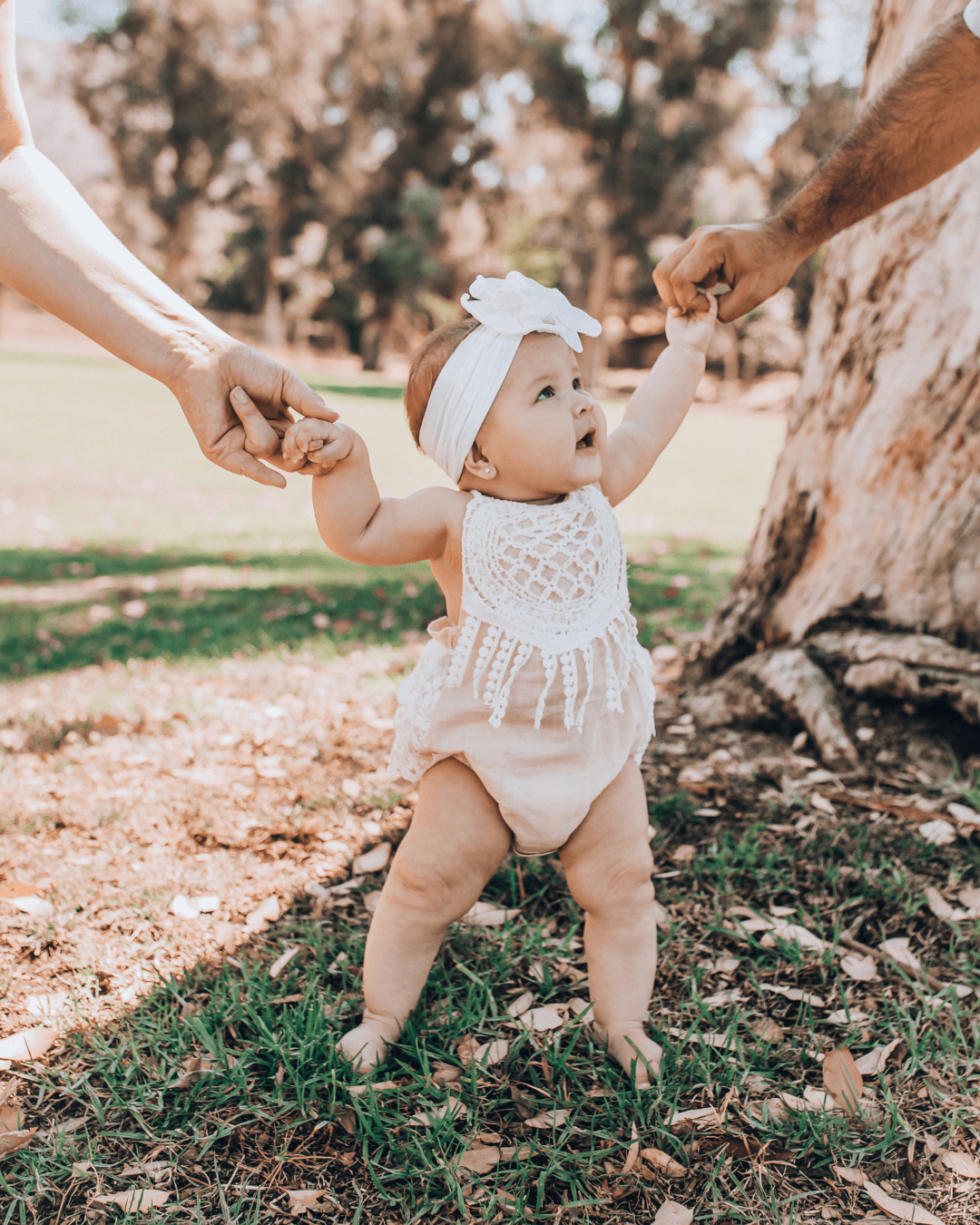
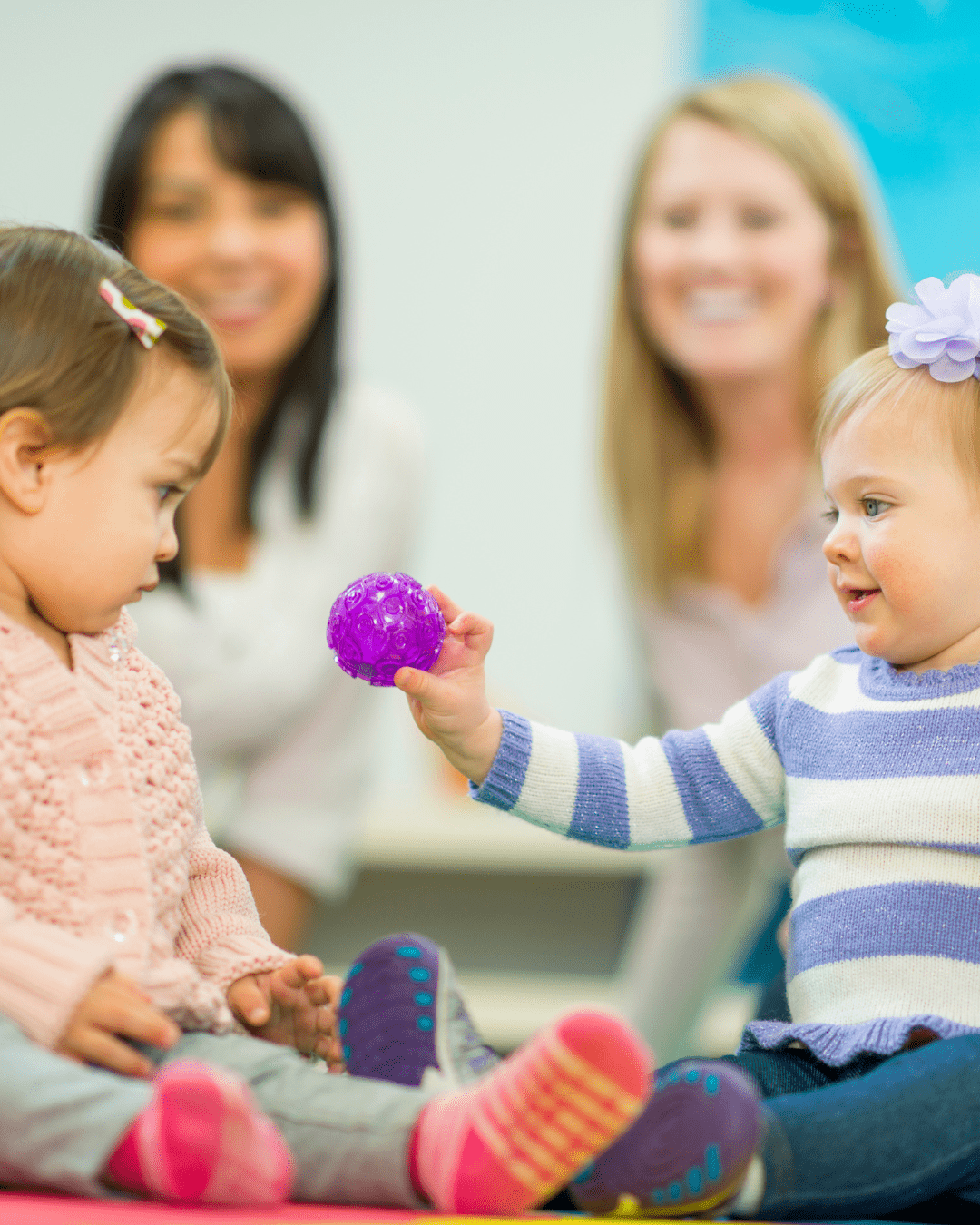
The Social Dimension: Learning to Connect Through Music
Music is inherently social, and this aspect is crucial for developing the interpersonal skills that many parents worry about as their children approach school age.Research from the University of Cambridge shows that children who participate in group musical activities demonstrate significantly improved empathy development, with regular music-based activities conspicuously advancing children’s capacity to recognize and consider the emotions of others.
In musical group settings, children learn to listen to others while contributing their own voice—a sophisticated social skill that directly translates to classroom discussions and peer interactions. They also experience the joy of collective creativity, where individual expression combines with others to create something beautiful together.
The Cambridge study found that musical activities emphasising imitation and synchronized performance help children develop what researchers call “shared intentionality”—an understanding of each other’s intentions through common aims, creating emotional affinity among participants. This social aspect of musical creativity is particularly valuable for children who may struggle with traditional verbal communication. Music provides alternative pathways for connection and expression that can help children build confidence in social situations before they have fully developed language skills.
Practical Implementation: Translating Research into Real Development
Understanding the science is one thing, but seeing how these principles translate into real developmental outcomes is what matters most to parents. Effective early childhood music programs incorporate several research-backed elements that maximize creative and expressive benefits.
Multi-sensory engagement is crucial—children don’t just listen to music, they move their bodies, manipulate instruments, and engage multiple senses simultaneously. Research shows that music may expose children to challenges and multi-sensory experiences which enhance learning abilities and encourage cognitive development.
Age-appropriate progression ensures that activities match developmental capabilities while still providing appropriate challenges. For 15-month-olds, this might involve simple cause-and-effect exploration with shakers and drums, while 4-year-olds might engage in more complex rhythm patterns and imaginative movement sequences.
Structured improvisation provides the perfect balance between guidance and freedom. Children learn foundational skills and concepts while having ample opportunity for personal expression and creativity. Research conducted with children aged 8-11 years over three months found that improvisatory musical activities around piano enriched with various musical instruments supported creative development. Educational experts suggest that improvisation processes should originate with imitation before proceeding with rhythmic exploration, creative movement, and literacy, with purposeful structures found within the music while allowing certain freedoms.
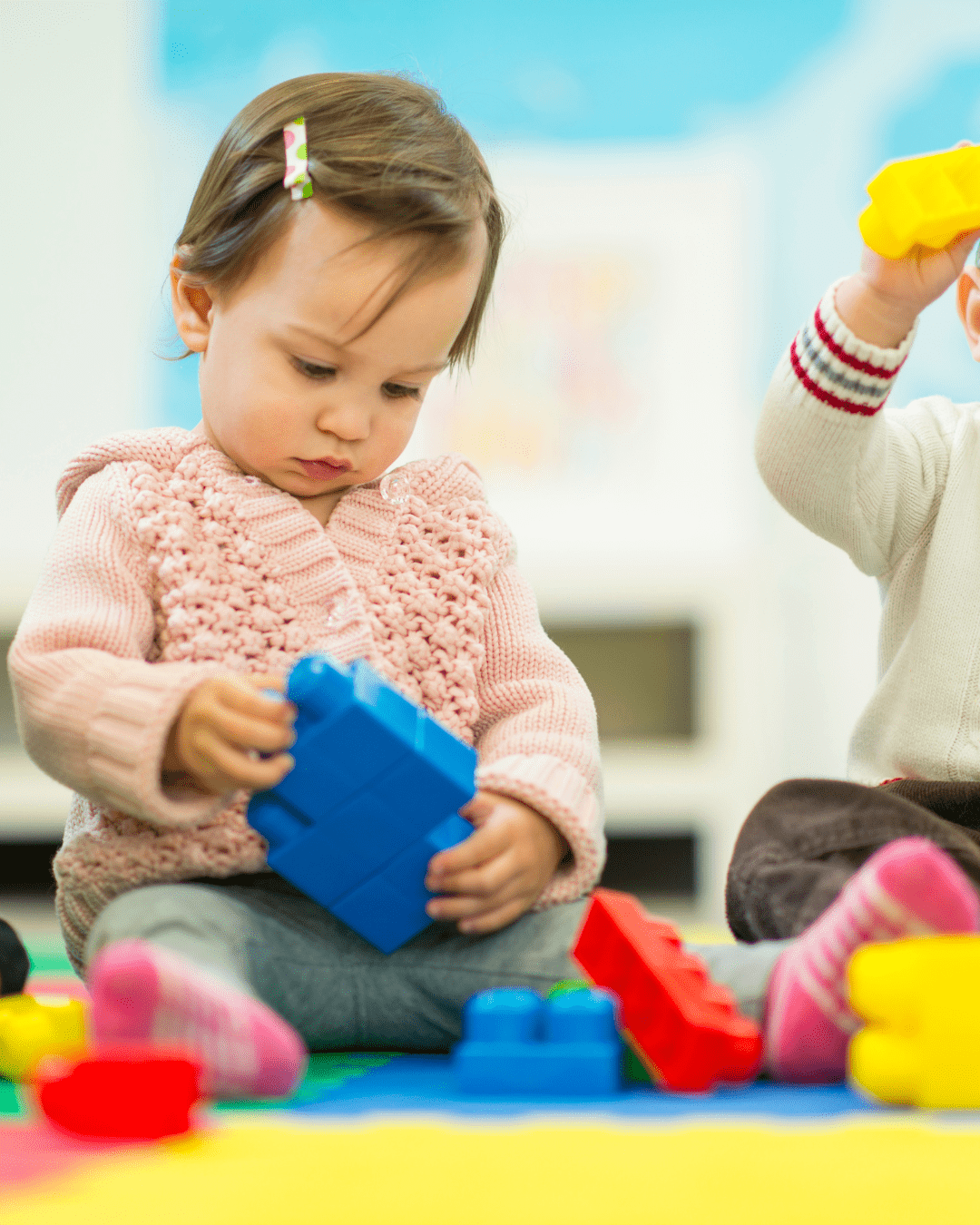
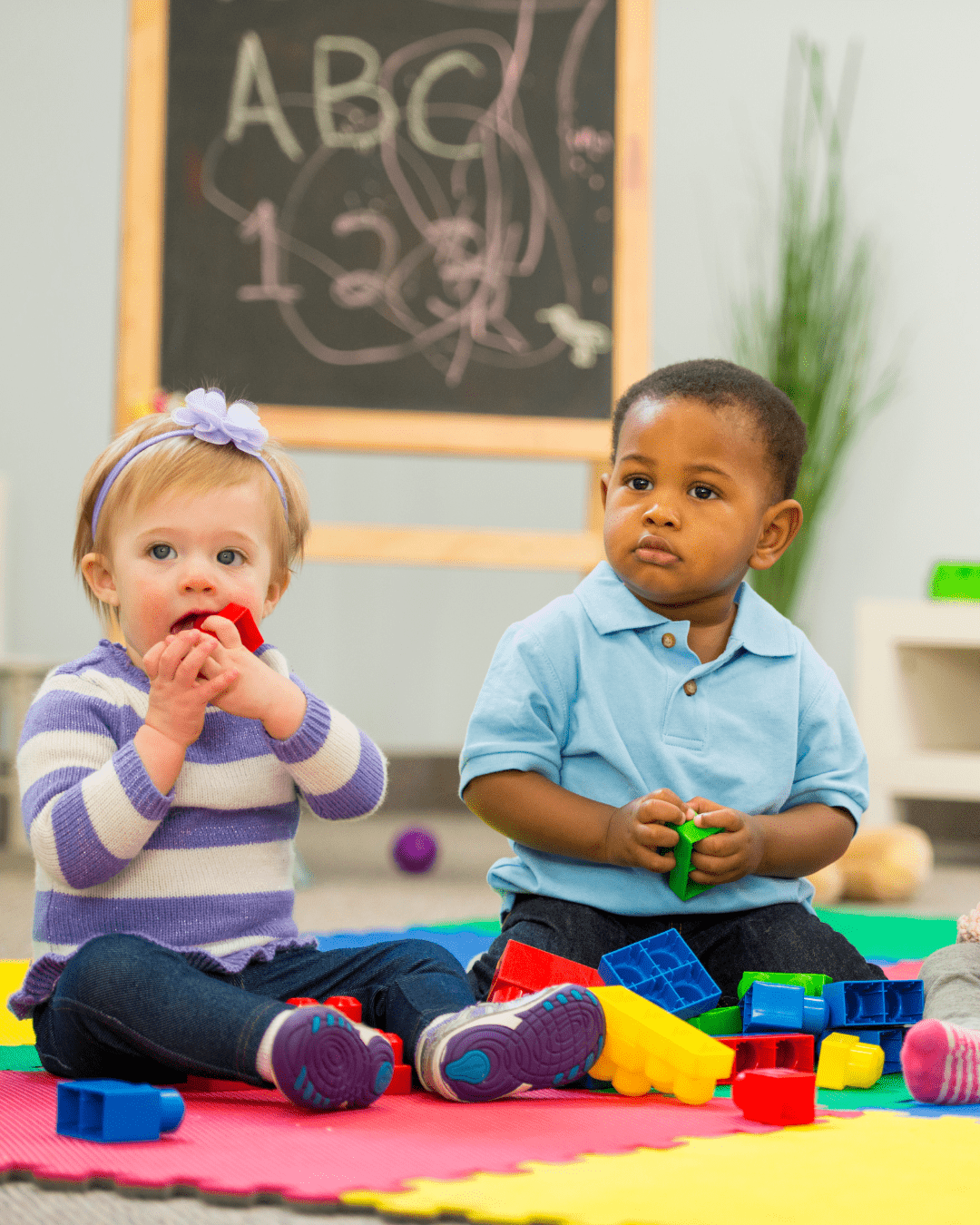
The Long-Term Impact on School Readiness
The creative and expressive skills developed through early musical engagement directly support school readiness in ways that extend far beyond music class. Research shows that preschool children who received private piano lessons showed statistically significant growth on spatial-temporal reasoning tests, while control groups did not show statistically significant growth on the same measure. Studies demonstrate that preschool children given six months of piano keyboard lessons improved dramatically on spatial-temporal reasoning, and this enhanced spatial-temporal reasoning from piano keyboard training supports mathematical learning.
Perhaps more importantly, the confidence and creative problem-solving skills developed through musical self-expression help children approach new learning challenges with curiosity rather than anxiety. They’ve learned that it’s safe to try new things, that their ideas have value, and that making mistakes is part of the creative process.
Supporting Musical Creativity at Home
While structured musical programs provide important foundations, parents play a crucial role in supporting musical creativity and self-expression at home. Simple activities like singing during daily routines, dancing together in the living room, or exploring household items as musical instruments can reinforce and extend the benefits of formal musical education.
The key is maintaining the same principles that make formal programs effective: celebrating individual expression, providing opportunities for both structure and improvisation, and creating emotionally safe spaces for creative exploration.


Conclusion: Investing in Creative Foundations
The research is clear: musical engagement during early childhood provides far more than entertainment or cultural enrichment. It creates fundamental neural pathways that support creativity, emotional regulation, and self-expression throughout life. From the neuroplasticity changes documented by USC researchers to the empathy development demonstrated in Cambridge studies, the evidence consistently shows that music education represents one of the most scientifically validated investments in a child’s creative and emotional development.
As we consider our children’s futures, we’re not just preparing them for academic success—we’re nurturing their capacity for creative thinking, emotional intelligence, and authentic self-expression. These skills, developed through the joy and wonder of musical exploration, will serve them throughout their lives, helping them become not just successful students, but confident, creative, and emotionally intelligent human beings.
The opportunity to provide this foundation exists right now, during these crucial early years when our children’s brains are most adaptable and when their natural curiosity and creativity are at their peak. By embracing music as a pathway to creative development, we’re giving our children tools they’ll use for a lifetime—and watching them discover the joy of expressing their unique voice in the world.
